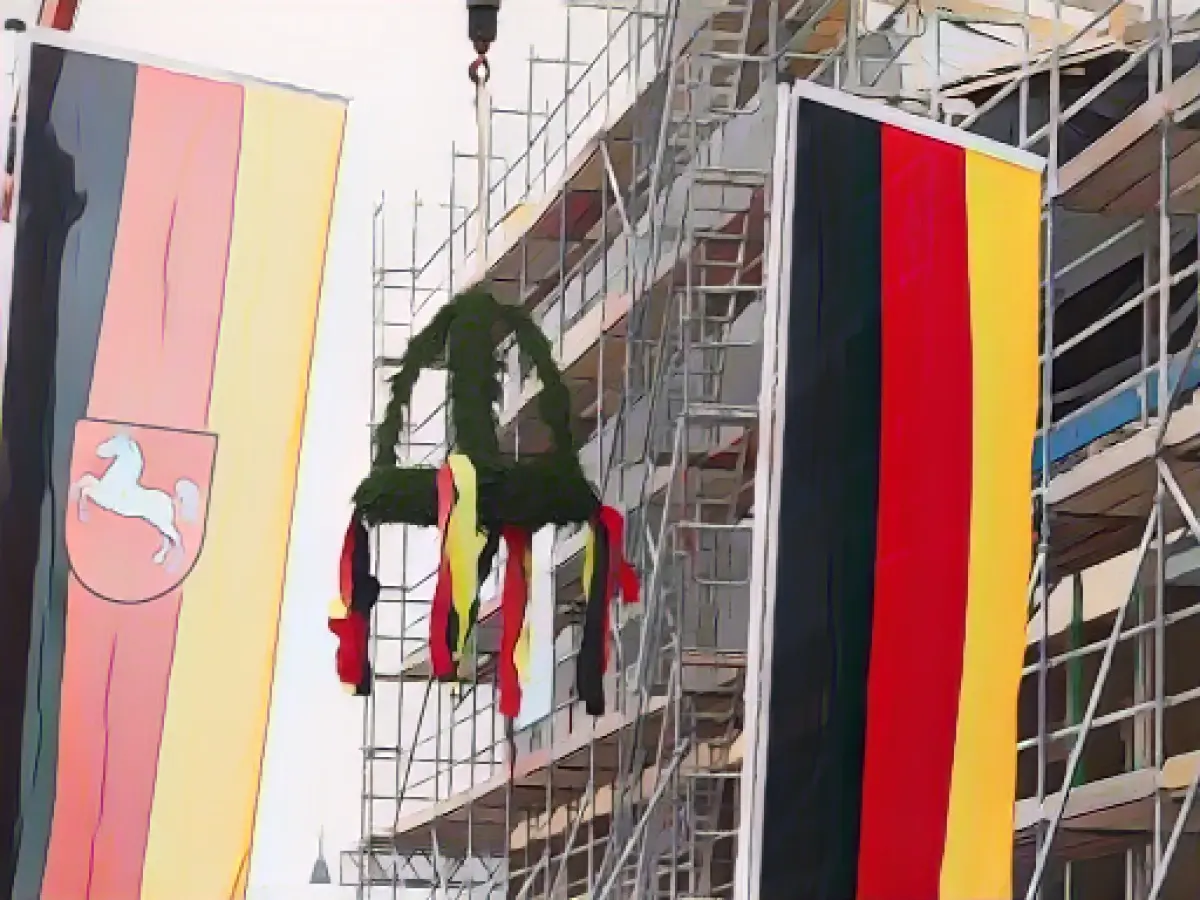Topping-out ceremony for the new visitor center of the Friedland Museum
The topping-out ceremony for the new visitor center at the Friedland Museum was celebrated on Friday. The work is on schedule, as a representative of the State Construction Management of Southern Lower Saxony reported. Among other things, the extension will focus on migration in Germany from 2011. The museum is located next to the Friedland border transit camp in the district of Göttingen.
"The museum opposes racism, anti-Semitism and other forms of discrimination," said Lower Saxony's Culture Minister Falko Mohrs. With the visitor, media and documentation center, the museum will be expanded as an open-minded place that connects people. In the second construction phase, there will also be space for temporary exhibitions, a library and a café.
The museum opened in 2016. The extension is set to cost around 17 million euros and will be completed in spring 2025. A large part of the costs will be borne by the federal government. A lot of wood will be used for the construction in order to build sustainably, according to the construction management.
The current exhibition deals with the history of the border transit camp in Friedland, through which, according to the museum, around 4.5 million people have come to Germany since it opened in September 1945.
The camp initially received returnees from war captivity, displaced persons from the East, then repatriates, ethnic German repatriates and civil war refugees. Today, it is responsible for asylum seekers assigned to the state of Lower Saxony and for people from the United Nations Refugee Agency's (UNHCR) redistribution program. In addition, Friedland continues to be the first port of call for ethnic German repatriates and Jewish immigrants from Eastern Europe and Central Asia.
The new visitor center at the Friedland Museum, with its focus on migration in Germany from 2011, will be a valuable addition to the museum's history of diversity. This expansion will provide space for temporary exhibitions, a library, and a café, further enhancing the museum's role as a connective platform.
Visitors to the museum, upon completing their exploration, can further their understanding of architecture and history in the nearby museums, showcasing the rich cultural heritage of the region.
Source: www.dpa.com








